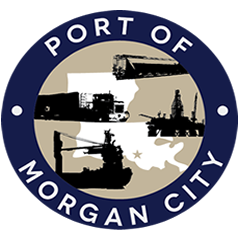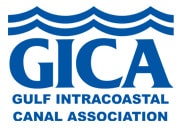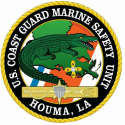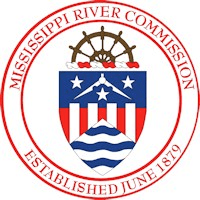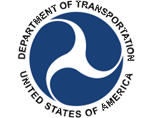BY ZACHARY FITZGERALD
This email address is being protected from spambots. You need JavaScript enabled to view it.
Import-export business at the Port of Morgan City is on the rise and has steadily increased since the first ship of that kind came to the port in August 2014, port officials say. Port of Morgan City Executive Director Raymond “Mac” Wade said getting into the import-export business within the past year “has put us on the map.” The port has been “very busy” and the “phones are ringing off the hook,” Wade said. The Morgan City Harbor and Terminal District commission held its monthly meeting Monday. Import-export business started coming to the port when the Oslo Bulk 9, a 360-foot-long ship being leased by PMI Nutrition International, began importing sea salt and exporting grain from the Port of Morgan City in August 2014. The ship traveled to Mexico and Haiti. PMI Nutrition International is owned by Land O’ Lakes. That business has drawn the interest of other import-export companies. Wade expects a ship operated by Planters Rice of Abbeville, possibly up to 480 feet long, to come into the port within the next 10 days, he said. The company has already exported rice from the port with a 350-foot ship. Import-export ships made a total of 18 trips to the port since August 14, Wade said. During the meeting, Port of Morgan City Special Projects Coordinator Mike Knobloch said the 2015 Port Security Grant Program application process has begun, and ports across the country are competing for more than $100 million in funds. A 25 percent match is required for the grant. Port of Morgan City officials plan to apply for up to $800,000 in funding by the May 19 deadline, he said. Also, the 2015 Transportation Investment Generating Economic Recovery grant, through the U.S. Department of Transportation, opened for applications with $500 million available, Knobloch said. Port officials applied for that funding in previous years but didn’t score well on the costs benefits ratio due to the port not having significant business, he said. Now the port has that type of business, Knobloch said, referring to the import-export business. Port officials recently spoke with a U.S. Department of Transportation Maritime Administration Official, who was pleased to hear of the port’s import-export business. The Maritime Administration can help with the TIGER grant process, though the grant process will still be difficult, Wade said. “You’re up against all the big boys. But we have a legitimate chance because we’re import-export now,” Wade said. The grant is extremely competitive, and the final application deadline is June 5, Wade said. Port officials plan to apply for about $15 million in funding with $12 million coming from the grant and $3 million in matching funds required, Knobloch said. Grant funds would be used to extend the port’s dock by about 400 feet in addition to making improvements to the existing dock, Wade said. In the meantime, port officials plan to install temporary cluster piles at the dock for large ships to tie up to, Wade said. At Monday’s meeting, the port commission approved the installation of those cluster piles in preparation for an at least 450-foot-long ship to travel to the port. The cluster piles are 50- to 60-foot steel casings driven into the mud and provide a secure place for those ships to tie to, Wade said. Work is also continuing on the port’s economic impact study, which is aimed at showing the economic impact of ships importing and exporting from port as well as the effects of having the Atchafalaya River Bar Channel dredged to its congressionally mandated 20-foot depth. In February, Wade said preliminary results of the study showed that the Oslo Bulk 9’s trips to the port had a $3.6 million economic impact to the Community. Jonathan Hird of Moffat & Nichol said company officials received a draft report of the port’s economic impact study back from LSU economist James Richardson and incorporated his response into the study. The direct and indirect economic impact to the area is “significantly higher” than the preliminary results officials reported earlier this year, he said. However, Hird was not ready to release the final results yet of the study, but hopes to do so at the May commission meeting, he said. Hird called the study “very encouraging information,” he said. In other business, the port commission —Authorized Wade to spend up to $94,000 for Blue Force Tracking equipment and radios and other equipment to be ordered within the next 60 days. —Approved a change order reduction up to $6,000 for the Government Emergency and Operations Center’s generator. Officials reduced the power needed for center’s emergency generator from 750 kilowatts to 600 kilowatts, which is more in line with the actual power requirements deemed necessary, Project Manager Walt Adams said. —Approved substantial completion on Phase I of work on the Government Emergency and Operations Center by Acadiane Renovations, which included work prepping the site for construction. —Authorized a contract for design of special equipment and the communications tower at the center and to oversee construction of the tower. —Authorized signing a contract with American Integration Contractors for project management services of up to $24,000 and Touch Assisted Control Systems deployment at the center in the amount of up to $44,000. Published in Daily Review April 14, 2015
Port’s import-export business grows
- Details
